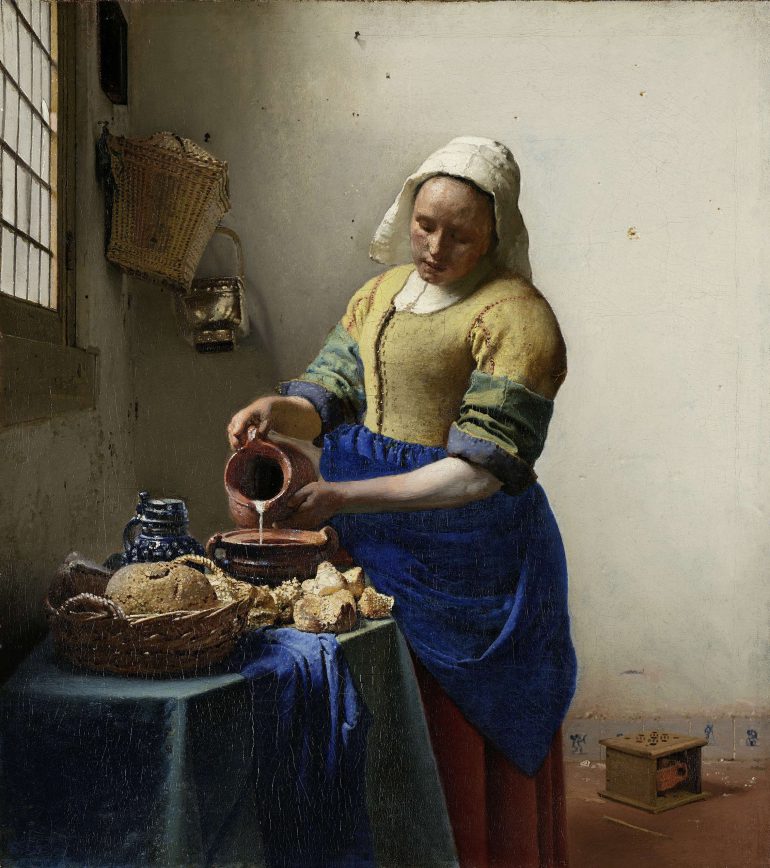In the run-up to Rijksmuseum’s major Vermeer exhibition in 2023, research on the 350-year-old painting was conducted, using the most recent technology. Hosting at least 27 out of the very small oeuvre of about 35 paintings by Vermeer, loaned from the most prestigious museums around the world, Rijksmuseum’s Vermeer exhibition will be the largest exhibition ever. In an extraordinary gesture, the Frick Collection in New York will lend all three of its Vermeer paintings, shown together outside of New York for the first time since they were acquired more than a century ago. Additional highlights include The Girl with a Pearl Earring (Mauritshuis, The Hague), The Geographer (Städel Museum, Frankfurt am Main), Lady Writing a Letter with her Maid (The National Gallery of Ireland, Dublin) and Woman Holding a Balance (The National Gallery of Art, Washington DC).
New research into The Milkmaid
In the run-up to the Vermeer exhibition, a team of conservators, restorers and scientists from the Rijksmuseum have been collaborating closely with colleagues from the Mauritshuis in The Hague to conduct research into Vermeer’s paintings, including The Milkmaid. The techniques used for this investigation include the advanced Macro-XRF and RIS scanning technologies that were recently part of Operation Night Watch, the major project devoted to the research and restoration of The Night Watch by Rembrandt.
New underpainting discovered
These state-of-the-art technologies have revealed what is clearly an underpainting on The Milkmaid. This discovery sheds an entirely new light on Vermeer’s methods. The general assumption was that the artist produced his small oeuvre very slowly, and always worked with extreme precision. However, a hastily applied thick line of black paint can be seen beneath the milkmaid’s left arm. This sketch shows clearly that Vermeer first quickly painted the scene in light and dark tones before developing the detail. A similar preliminary sketch in black paint can be seen on the wall behind the young woman’s head. Furthermore, it has now become clear that Vermeer used black paint to sketch a jug holder and several jugs, but didn’t develop them any further.
The artist’s fire basket
The study has yielded images in significantly higher detail than before. This has enabled scientists to identify the previously discovered basket, at the lower right of the painting, as a so-called ‘fire basket’. Woven from willow stems, this type of basket was a standard household item. A fire bowl containing glowing coals was placed in the basket to keep babies warm and to dry nappies. Seventeenth-century archival material including Vermeer’s own estate inventory reveals that he – father of eleven children – owned one himself. In the painting, Vermeer later covered over the fire basket with the foot stove, Delftware tiles and the floor.
Vermeer exhibition (10 February – 4 June 2023)
www.rijksmuseum.nl/vermeer
